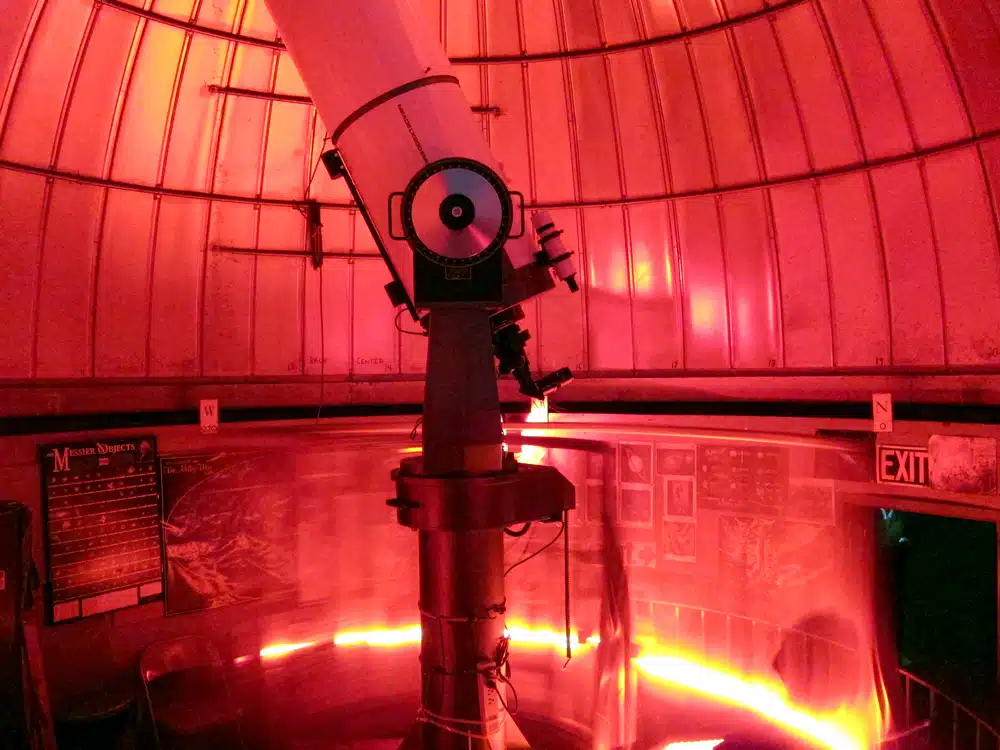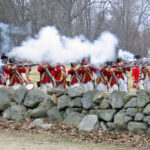The 5 Best Stargazing Experiences in New England
Escape from cities and suburbs, where light pollution robs us of true nighttime, and visit one of New England’s prime stargazing spots.

Coffee By Design | Portland, Maine
Photo Credit : Katherine Keenan5 Best Places to Stargaze in New England

Photo Credit : Vincent Lawrence

Photo Credit : Kristi Rugg
Acadia National Park | Bar Harbor, ME
The passage of a local ordinance rarely attracts notice, much less thousands of visitors. But Bar Harbor’s 2009 “Light and Glare” law, designed to preserve the Eastern Seaboard’s inkiest night sky, has made the island town best known for Acadia National Park a stargazing mecca. At 9 p.m. on any Wednesday or Saturday through the end of August, spread your blanket on Acadia’s Sand Beach, lie back, and allow a park ranger to take you on a one-hour celestial journey. Activities in the park will also be a highlight of the 10th annual Acadia Night Sky Festival, September 5–9. Like planets aligning, Bar Harbor businesses and community organizations combine forces to attract upward of 4,000 astronomy professionals and enthusiasts to this celebration that fosters appreciation for the darkness so critical to seeing what’s beyond our atmosphere.

Photo Credit : Cait Bourgault
AMC Highland Center Lodge | Bretton Woods, NH
The Mountains of Stars collaboration brings an enthusiastic crew of college students to New Hampshire’s White Mountains each summer to serve as guides to the heavens. Through August 19, join them and other experts for free nightly and daily programs at the Appalachian Mountain Club’s Highland Center Lodge in Crawford Notch, the hub of a universe of stargazing experiences offered at several locations beneath this region’s deep, dark night skies. Peer through the lodge’s high-powered Celestron telescope to see solar activity by day, and celestial bodies at night. An indoor planetarium ensures astronomical education is weatherproof. If skies are clear, the August 12 Perseid meteor shower viewing party and barbecue will be summer’s pinnacle event.

Photo Credit : Courtesy of Frosty Drew Observatory & Sky Theatre
Frosty Drew Observatory & Sky Theatre | Charlestown, RI
There are hundreds of people here to see the hottest stars. Some are chillaxing in the “Lunar Lounge,” watching the moon projected live on the side of the theater. Others are mesmerized by “Sky Evangelists” waving their “lightsabers” at constellations. There’s animated chitchat; everyone’s really digging the scene. Your significant other just asked a profound question, revealing a depth of character as yet unseen. No, this isn’t some Hollywood party. It’s a peak-summer Friday night within the sea breeze–chilled recesses of Ninigret Park — the darkest spot between New York City and Boston — where, yes, you can see the Milky Way ripping across the sky. The lines at the 10 viewing stations can get long, especially for a look through the 16-inch Meade LX200 SCT, the big telescope inside the dome. But passionate astronomers and volunteers often stay until the wee hours, so everyone gets a turn. Friday stargazing nights are actually a year-round phenomenon that attracts astro geeks from as far away as Washington, D.C.

Maria Mitchell Association’s Loines Observatory | Nantucket, MA
To look at deep-sky objects through the largest telescope routinely open to the public, you’ll have to travel to Nantucket — that speck in the ocean shrouded in black velvet by night — on a Monday or Wednesday between 9 and 10:30 p.m. late May through August. The Loines Observatory, located across from Prospect Hill Cemetery, where America’s first female astronomer Maria Mitchell rests, has two domes. If you’re impressed by your view of bright planets and double stars when you peek through the antique 8-inch Clark telescope, just wait. The 24-inch research telescope’s eyepiece is your ticket to spying on planetary nebula (the remnants of exploded stars), our neighbors in the Andromeda Galaxy, and globular clusters (masses of hundreds of thousands of stars born simultaneously). Suddenly, anything heavier than gravity weighing on you will seem awfully small.

Photo Credit : Courtesy of Northern Skies Observatory
Northern Skies Observatory | Peacham, VT
On the Bortle Dark-Sky Scale, a “1” (out of 9) is absolutely, naturally dark — the darkest skies on earth. The Northeast Kingdom Astronomy Foundation’s observatory was built in a place so rural, nights here solidly score a “3.” Some are as good as a “2.” And that means when this research and education facility known for the data captured by its powerful 17-inch robotic telescope invites curious observers to stop by for a star party once each month June through October, you’re in for a stellar experience, even though you’ll be squinting through a half-dozen smaller telescopes positioned on the lawn. The team behind this purely donation-driven organization is devoted to sparking young imaginations, to showing off quasars as far as 11 billion light-years away and shadows cast right here by the Milky Way, and to providing night-sky therapy for all.





Wonderful article on stargazing in New England.
One should learn and take in the Stellafane VT. Quoting from their web page:
We are The Springfield Telescope Makers, Inc., an active Amateur Astronomy and Telescope Making club located in Springfield, Vermont. We put on the annual Stellafane Convention in July or August, hold Mirror Making Classes in the Fall and Winter, and usually hold a few Public Star Parties each year (check our Events calendar). Founded by Russell W. Porter in 1923, and considered by many to be the “Birthplace of Amateur Telescope Making”, we have a rich History.
People come from countries around the world. The site informs about conditions this year. John Pierce was one of the founders and taught my mechanical drawing class at SHS about 1955. Get a chance to visit when open, amazing what’s happening in Spfld VT and nice sky observing.